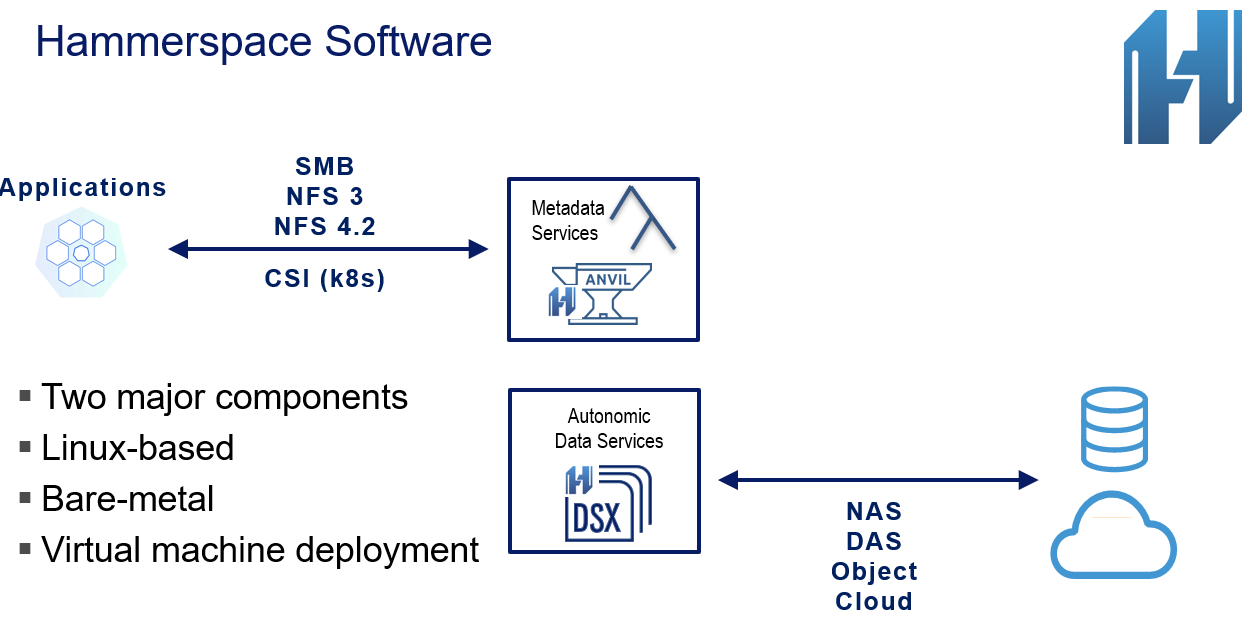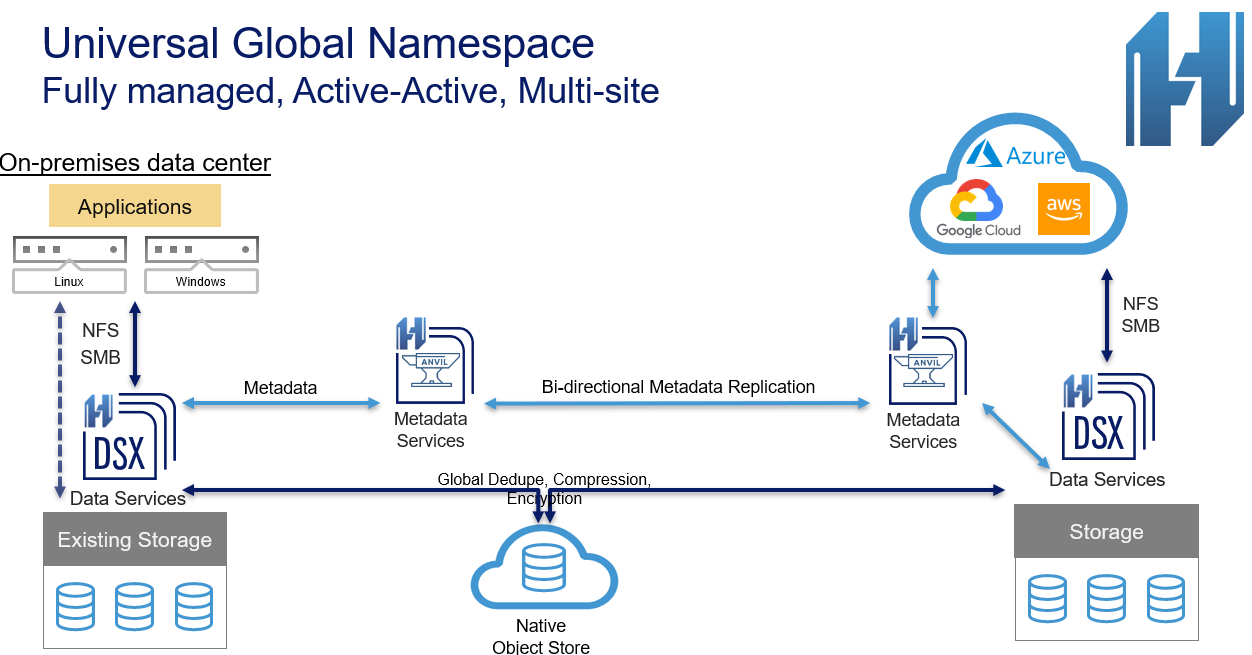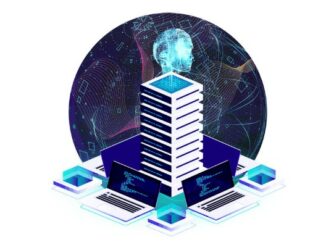
As it was emerging, cloud computing was seen as a fairly straight-up proposition for enterprises of finding a cloud, putting applications and data into it and running and storing it all on someone else’s infrastructure.
But over the past few years, it’s become a complex mix of hybrid clouds and multiclouds, with some workloads and data staying on premises while others were pushed into the public cloud, and organizations using several public clouds at the same time. In the new world where data is at the center of everything and yet housed and used in multiple sites, having access to data wherever it resides and being able to move it quickly and easily between different clouds and between the cloud and core datacenter is crucial to an enterprise’s business success.
Containers like Docker and the Kubernetes container orchestration platform have come onto the scene in part to help ease the portability of applications across the expanded distributed landscape. Over the past couple of quarters, startup Hammerspace has begun selling its data-as-a-service platform, a product designed to make the data as agile and easy to orchestrate across hybrid and multicloud environments as containers.
The platform is designed to ease the pathway to the cloud for enterprises by separating the data from the infrastructure via a control plane and managing it through Hammerspace’s software. Metadata is separated from the data by the platform and stored in a database and services needed for accessing the data is separated from the end user’s back-end storage. The platform keeps track of the data’s physical location.
The platform has been updated in recent months, including releasing a global namespace system in April that can run across as many as 16 sites, including Amazon Web Services (AWS), Microsoft Azure and Google Cloud Platform cloud storage services, and data is orchestrated as microservices, according to Hammerspace. In addition, the vendor has added support for the Container Storage Interace (CSI) in its software, which extended the platforms features to containerized applications.
The linking of the software platform with containers and Kubernetes was important for Hammerspace, which until two years ago was known as Primary Data, according to Douglas Fallstrom, vice president of products and operations at the six-year-old company.
Getting organizations to the cloud meant determining “how do customers leverage the cloud and also Kubernetes, because we felt they were highly related,” Fallstrom tells The Next Platform. “They’re not dependent on each other, but typically in customer conversations, we’re now talking about both. The problem we’re solving is getting customers to use the hybrid multicloud from a data perspective. This is about virtualizing data, abstracting and containerizing it away from the infrastructure, and the moment you’re able to do that, the data can freely flow wherever it needs to be. We can have a customer start using their Amazon or Google or Azure infrastructure with on-prem data in literally minutes. We don’t solve at speed of light, but it looks like it’s all there and doing it very easily.”
The Linux-based software lets data move between sites without disrupting operations and enables enterprises to manage data through a single platform across multiple sites, burst workloads into the cloud and take advantage of unified file data services by using a single global namespace across multiple sites and vendors. It’s list of partners not only includes the top three cloud service providers but also vendors like NetApp, Western Digital, Red Hat and Cloudian.
The company is seeing uptake from large enterprises in a number of industries, including media and entertainment, financial service and life sciences, according to Fallstrom. Media and entertainment organizations tend to use the Hammerspace platform for bursting into the cloud or using the cloud for greater efficiencies while financial services are looking more for collaboration and Kubernetes. With the Kubernetes CSI driver, enterprises can get access to data that is controlled by Hammerspace and stored in any systems – such as file, object and block system – and anywhere, whether in the cloud or on-premises.
Fallstrom says Kubernetes use among enterprises is on an upswing as they move from testing it to using it. Hammerspace isn’t betting all of its business on the orchestration technology, but when the company is talking to enterprises about hybrid clouds, those organizations often have a Kubernetes project in the mix. A large telco that Hammerspace is working with is putting their Oracle databases into Kubernetes because it’s simpler to use than VMs, he says. Kubernetes also allows the telco to move data between storage classes and without application interruptions, persist data at an enterprise level and replicate it across sites, which are some of the goals of Hammerspace, Fallstrom says.
The creation of the global namespace system has been key for Hammerspace. Through the system, Hammerspace becomes the namespace, regardless of the underlying storage being used.
“What we’ve done in our product is we take over the namespaces in the underlying storage and that’s what we store in the Hammerspace software,” he says. “We run as a virtual appliance or in a cloud as a service. That allows us to move data because we’ve done innovation behind the scenes to move data live without disruption anywhere. Because we move data freely, that means we can virtualize and put data anywhere we want. Data can come in and deliver super high performance, data can come in and live on objects in the back end, data can come in and live in the cloud or in another site. It may not even be local where you’re at, but it looks like the data is there … but it may actually be somewhere else in the world on another site managed by another Hammerspace. That universal global namespace is built within Hammerspace itself.”
The vendor uses legacy protocols like NFS and SMB, which is separated from the storage of the data itself, allowing Hammerspace to add protocols to meet customer needs arise but also allowing them “to go with existing protocols in a scale-out way so customers don’t need to build custom clients or change anything on the client,” Fallstrom says. “Pretty much any Linux or Windows or Unix today can access the namespace without any change from their perspective.”
“We’re not data storage. [The data] is controlled by us, but the customers put data on their existing storage or if they’re buying a new cloud storage or what have you, they put it in there. What we allow you to do is, with a very easy UI or a language – which we call it Hammerscript – dictate placement rules of data and rules that define the intent of what you want from your data. This is different from a policy-based language.”
The software enables the data to follow the user from one site to the next, automatically putting it on the fastest storage locally, regardless of the storage vendor. Through machine learning, the system knows where to move the data and figure out the cost from a resource perspective, and the user can see the results in real time.
“You can see when files are moving in real time if you manage to catch it because we move things really quickly,” he says. “But also, we have these graphs in the product that can show [how] the data has moved for last two hours for example. Within in a movement, we have deduplication, we’ve got compression, we’ve got encryption built in, so it’s safe to move across distance. All those things are automated and built into the behavior of products. We also integrate whenever possible with the underlying vendor’s method of, for example, cloning storage and so forth. We don’t do any unnecessary work along the way to manage the customer’s data.”






Be the first to comment